As the medical sciences advanced in the field of disease diagnosis and therapeutic agents, the targeted and specific use of drugs and biomaterials increased. Breast cancer (caused by malfunction of HER2 Human Growth factor receptor) is one of the most widespread cancers between females. In recent years, specific HER2 receptor antibodies (trastuzumab) were used for preventing cancer metastasis and cancer treatment. It has shown that antibody fragments are more specific therapeutic agents than intact antibody because fragments are smaller than whole antibody molecule, thus, fragments can migrate to the target tissue more efficiently.After digestion of antibody into its fragments (Fc, Fab / F(ab)2) by chemical digestion methods, chromatography methods are commonly used to separate fragments from each other. The chromatography methods are discrete and expensive methods due to the separation columns used for separation.
Introduction of Sensors and Integratol Bio-Mems/Microfludics Research Lab
No results found.
Research Projects
Development of a lateral flow immunoassay strip (rapid test) for SARS‐CoV‐2 infection diagnosis with salivary sampling
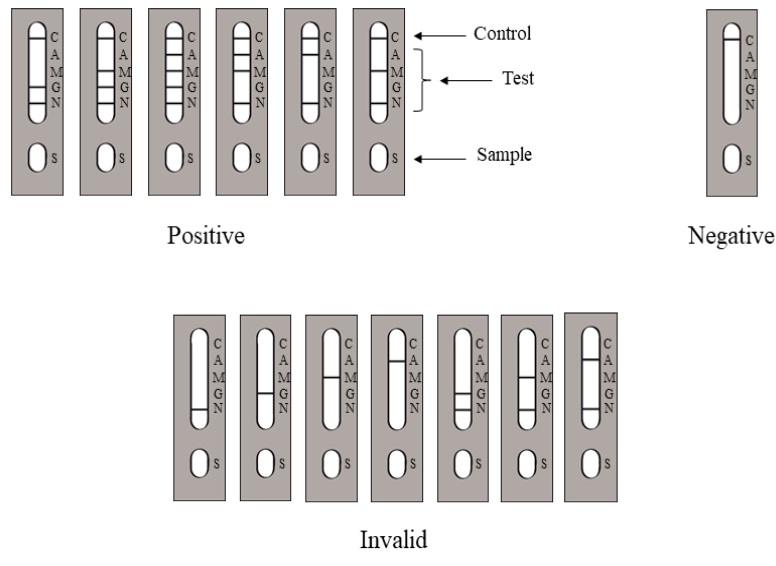
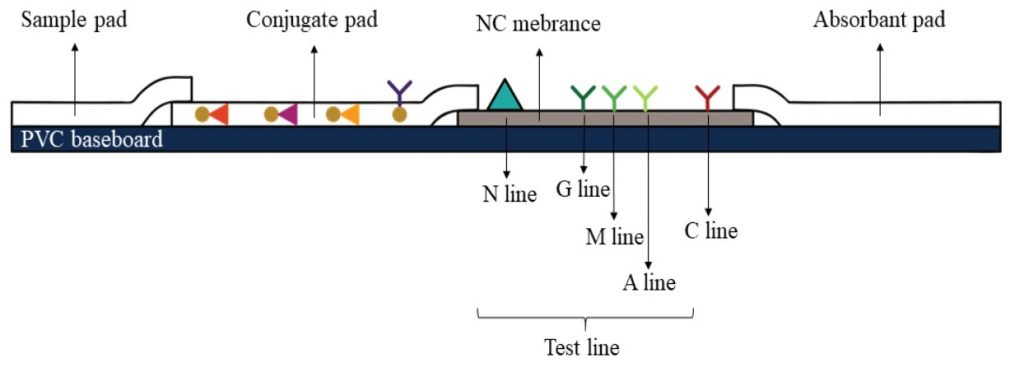
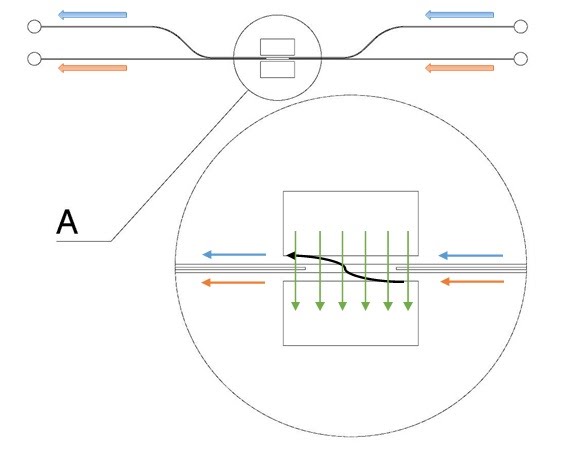
Antibody Purification/Production and Characterization
Trastuzumab antibody fragments separation using microfluidic free flow electrophoresis
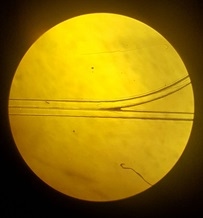

Microfluidic Development and Formulation of Medical and Industrial Nanoparticles
Metal nano-particles are in the middle of industrial and medical attention due to their unique and elevated physio-chemical and optical properties and wide application areas. The superior and radically improved properties is a function of size and shape of nanoparticles, which are determined by the fabrication process. Medical applications mostly require spherical nanoparticles for antimicrobial, and ligand or target analyte bio-conjugation. There are a number of techniques for fabrication of metal nanoparticles which are batch fabrication and a novel recent technique using microfluidics. The latter can be used to fabricate the nanoparticles at the point of use (POU) which eliminates the storage and anti-agglomeration problems. Moreover, the technique is scalable portable and agile and the process time from loading the chip to metal nanoparticle production in its final liquid suspended state takes less than 2 minutes.
To fabricate spherical particles we have used chemical reduction in a microfluidic reactor. This chemical process is a straight forward one-step process and can be implemented in a variety of setting in ambient or cooled environments. On the other hand, using micro-reactors enables better mixing, reduced size, seamless and spontaneous reaction from the material supply unit to the point of use. Sodium borohydride and silver nitrite was entered into the microreactor in ambient temperature in concentration ratios of 9/1. The product was colloidal silver nanoparticles at 43 nm and appropriate size monodispersity. Fundamental hydrodynamic and kinetic parameters which impact the size, its monodispersity and the reaction yield is studied via numerical simulations and experimental verifications. Characterizations were conducted by SEM and DLS to confirm the size, distribution and shape of the nanoparticles. The PDMS microreactor on chip were fabricated by soft lithography on glass. Different size of nanoparticles with appropriate/tunable monodispersity were successfully fabricated from 23nm to 43nm, by fine tunning the aforementioned hydrodynamic and reaction kinetic parameters. SEM images revealed that the particles are spherical in shape and were not agglomerated during the process.
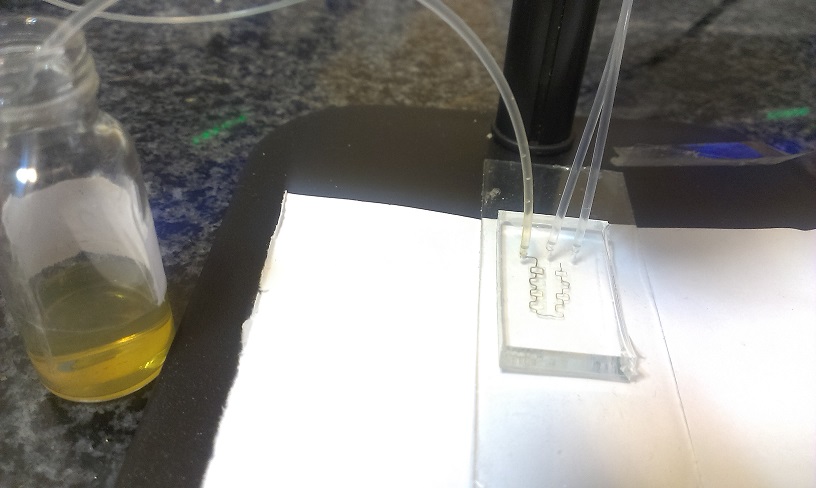
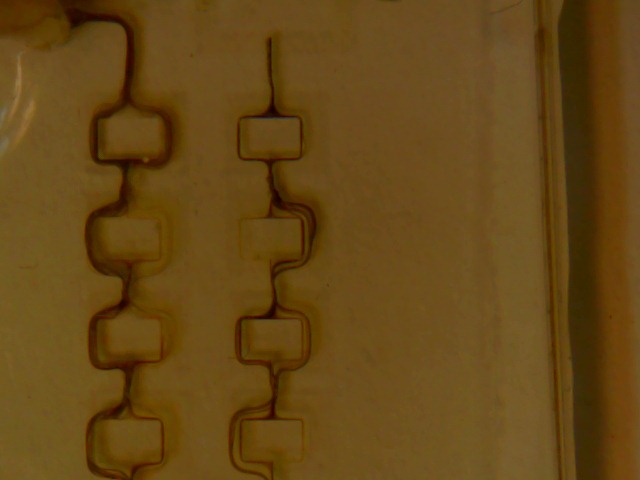

Development and Enhancement of the Performance of Lateral-flow Immunochromatographic Assays (LFIAs)
One of the ongoing challenges in lateral flow Immunochromatographic assays (LFIA), is lowering the limit of detection and enhancing their signal quality, i.e. the color intensity. There are a number of rather costly and complicated processes for this aim, such as the use of functionalized materials/membranes and additional spectroscopic readout units. Nonetheless, there are simple and easy to practice alternatives, to be uncovered by analyzing the essential parameters of immunological reactions. The color intensity of the test line is a function of analytes flow velocity and their reaction rate. Detection pad width and test line position impact the flow velocity and reaction rate kinetics, examined in this paper for the limit of detection (LOD) and test-line color intensity. Firstly, the impact of width on the LOD was examined for human chorionic gonadotropin (pregnancy biomarker). Test line color intensity was measured using five different widths of the detection pad (trapezoidal) and four different test line positions, and the trends observed were explained according to the measured evolution of the velocity along the chromatography paper. With a constant width absorbent pad, LOD was cut by half to 5 mIU/ml by using a narrowing width detection pad, which keeps the wicking velocity higher than normal strips, and compared to them, color intensity increase between 55 and 150%, depending on the concentration. Nevertheless, a widening detection pad might cut the color intensity up to 150%, compared to normal strips, due to a profound decline of the analyte to ligand ratio at the test line. In addition, adequately sending the test line away from the conjugate pad yields the highest possible color intensity, for up to 400% of increase, in lower concentrations and narrowing test pads. However, further distancing the test line downfalls the color intensity.
Thermophoretic Isolation of Circulating Tumor Cells, Design of a Microfluidic Chip
In this work, we design a novel microfluidic chip to analyze and simulate the thermophoretic isolation of circulating tumor cells. For the first time, separation of circulating tumor cells from same size peripheral blood cells is examined by thermophoresis. Moreover, a discrete heat source was used to attenuate the separation efficiency, instead of a continuous heat source. Physical properties, such as thermal conductivity, gravity and hydrodynamic forces, were used in numerical design of a microfluidic chip to preferably move white blood cells toward colder walls, due to thermophoresis. To examine the separation process, or differentiated upward migration of cells between the fluid layers, the creeping flow and continuity equations are simultaneously solved along with the constituent forces by FEM modeling. Results show that upon applying a minimum temperature difference of 1 °C, white blood cells are effectively separated from tumor cells, in a 4.5-mm-long microchannel. Maintaining an oscillating/symmetrical temperature gradient in the longitudinal direction minimizes the required separation length of the channel. Moreover, for samples with relatively wide range of size distributions, thermophoresis can robustly separate the analytes, even for the same diameter analytes where the difference in buoyancy or gravity forces is infinitesimal or not present. Such small temperature difference in walls does not denature cells, the overall design is relatively cheap to apply and requires simple fabrication, and the separation is implemented label-free.
Image processing from a microfluidic bio-chemical reactor for Colorimetric Detection of Heavy Metals by Smart-phones
In a joint project we have developed a smartphone-based microfluidic platform for point-of-care (POC) detection The simultaneous colorimetric detection of trace arsenic and mercury ions (As3+ and Hg2+) was performed using a novel image processing application (app). To achieve this goal, a microfluidic kit was fabricated using a polydimethylsiloxane (PDMS) substrate with the configuration of two separated sensing regions for the quantitative measurement of the color changes in GNPs to blue/gray. To fabricate the microfluidic kit, a Plexiglas mold was cut using a laser based on the model obtained from AutoCAD and Comsol outputs. The colorimetric signals originated from the formation of nanoparticle aggregates through the interaction of GNPs with dithiothreitol – 10,12-pentacosadiynoic acid (DTT-PCDA) and lysine (Lys) in the presence of As3+ and Hg2+ ions. This assembly exhibited the advantages of simplicity, low cost, and high portability along with a low volume of reagents and multiplex detection. Heavy Metals Detector (HMD), as a new app for the RGB reader, was programmed for an Android smartphone to quantify colorimetric analyses. Compared with traditional image processing, this app provided significant improvements in sensitivity, time of analysis, and simplicity because the color intensity is measured through a new normalization equation by converting RGB to an Integer system. As a simple, real-time, and portable analytical kit, the fabricated sensor could detect low concentrations of As3+ (710 to 1278 mg L.1) and Hg2+ (10.77 to 53.86 mg L.1) ions in water samples at ambient conditions.


Design and Development of a Microfluidic Platform for Analyzing Liquids Bubble Point
In this project, a novel fluids bubble point measuring device is developed using microfluidics. The required microchannel network is etched on a P-type silicon substrate by wet lithography. This channel is assembled to a 7740 pyrex wafer by anodic bonding. The sample fluid pressure was supplied by a pressure tank & Piston accumulator. The pressure was regulated using a high-pressure regulator and the use of three pressure gauges that were installed at different points of the system. A small heat supply is mounted on the back of the silicon substrate & it is in contact with the channel with thermal grease. The system is tested using butane fluid up to 35 bar pressure. We successfully determined the bubble point of different fluids, with superior performance to conventional methods in terms of required process time, and low volumes of sample fluid. For fabrication of this high-pressure microchip a custom anodic bonder was designed and developed in SIBlab.
Development of efficient, compact and precise pumping method for Lab on a Disk Applications (part of PCR on Disk Project)
We developed a novel concept for centrifugal pumping of fluid, harnessing the inertial braking forces in a microfluidic compact disk. Due to deceleration of the disk, torque and inertia forces are exerted on the bulk fluid that is coupled to momentum equation for rediction of the developed pressure that drives the liquid. Head losses in connecting channels are also calculated to predict the exact length which liquid travels in the centrifugal direction, and determine the volume of liquid transferred. Based on geometric and kinematic parameters, a differential equation is developed to accurately determine the travel length of the liquid and pumping exact volume of transferred liquid to the target chamber, in the centrifugal direction. This method enables exploiting maximum space of the disk and promises for a controllable, relatively cheap, compact and high-throughput passive method for relocation of liquids closer to disk center.

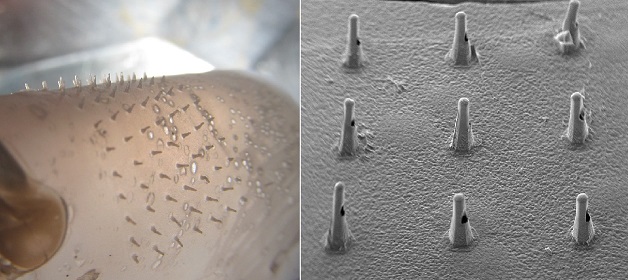
Development of Biodegradable Microneedle Patch for Transdermal Drug Delivery in Normal and Damaged Skin
The most important objectives of this project are the development of protocols for and fabrication/production of polymer micro-needle patches which are biodegradable, capable of proper delivery of the drug to the intended wound, and without causing pain. Moreover, they can potentially increase the impact of the drug on the wound site and improve its healing process.
Development of Handy Processes for Microfabrication of Hydrophilic channels on Paper: Biomedical/Chemical Sensor s/Actuators Development
We have enhanced the performance of lithographically patterned microchannels on paper and tailored it to a do it yourself method by examining the impact of each microfabrication step on surface properties. Modification of photoresist spreading, baking, exposure and developing steps improved paper and channels quality and decreased fabrication costs and time. The proper concentration of SU-8 in cyclopentene was found 1/8, to enable coating on paper by soaking, faster baking (10 min-65 ), and improved paper hydrophilicity. The UV-exposure time and energy were modified to enhance the channel quality. Then, the patterned paper was washed in cyclopentene for 15 minutes, and baked for 1 minutes at 95 . The modified process leaves 100 uniform channels on paper in around 26 minutes, from design to completion. Each step modification was assessed by analyte flow testing. The tuned process also improved the uniformity of channels, and eliminated the need for a spinner or hotplate. Exposure refinement alleviated the necessity for a mask aligner machine, and sunlight may also be used instead of UV. Channels were finally treated with BSA to improve partitioning and analyte flow, and reduce longitudinal binding, verified by IR absorption spectrum. The resulting PAD was used for detection of TSH on the onset of hypothyroidism at 4 mU/L in four minutes, using an ELISA protocol.
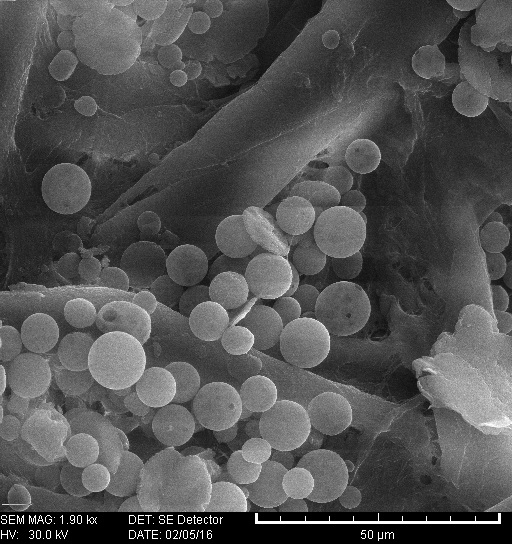
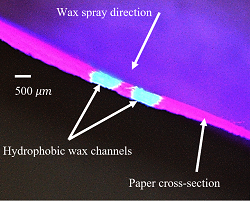
Development of a Cheap & Fast Micro-fabrication Process on Paper for Rapid and Portable Smartphone-Based Multiplexed Quantification of Bio-Markers/Chemicals
A cheap/rapid technique for fabrication of μPADs is presented for point of care analysis. Hydrophobic channels were formed across the whole width of paper. The process yielded uniform 563±5 μm hydrophilic microchannels, without the use of the clean room, UV lamp, or organic solvents and was completed in a single step without the need for a hotplate. Wax is properly impregnated across paper thickness by spraying under an optimized temperature and pressure. Our method is advantageous in the cost and ease of fabrication (even at home), process time (less than one minute), the feasibility of mass-fabrication, multiplexing, readout and environmental considerations. Performance of the resulting μPAD was assessed on a multiplexed Uric acid and nitride assay, bearing 95% of confidence level in the readout against standardized tests. A novel RGB processing app was developed for smart-phones to quantify colorimetric read-outs through a heuristic normalization equation which converts RGB to integer systems. This combinatorial sensor demonstrates a good linear range (up to 500 mg/dL), low detection limit (49 mg/dL) and real-time analytic capabilities for portable and information technology-based diagnostic and health monitoring.
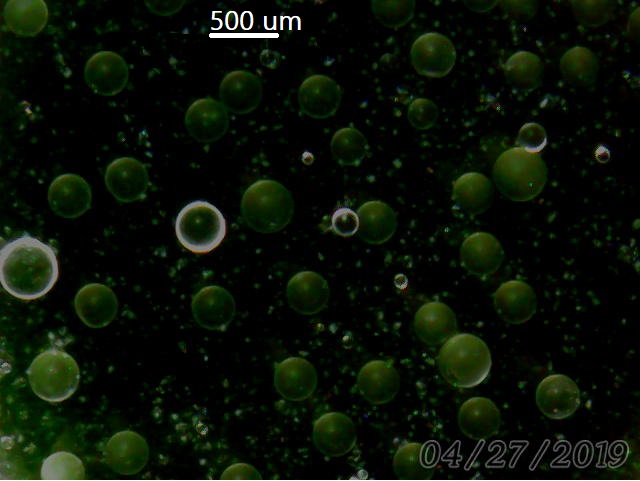
Gallery
Contact Us
| Phone: 98-21-77240540 Ex: 8991 | |
| Email: asiaei[AT]iust.ac.ir | |
| School of Mechanical Engineering, Iran University of Science & Technology, Narmak, Tehran, Iran |





